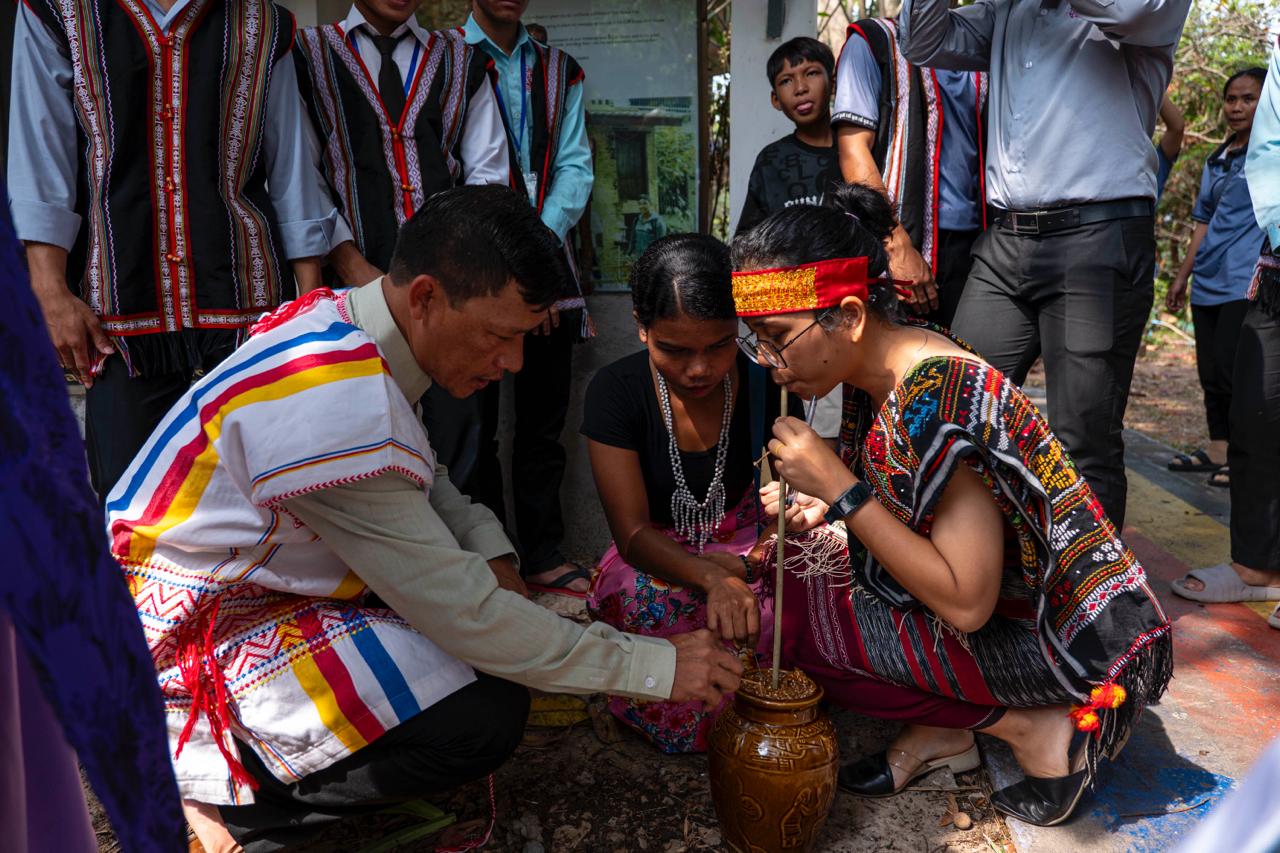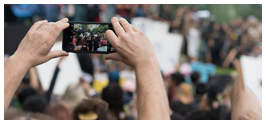The Kayan are a sub-group of the Red Karen (Karenni people), a Tibeto-Burman ethnic minority from Myanmar (Burma). The Kayan consists of the following groups: Kayan Lahwi (also called Padaung, ပဒေါင် [bədàʊɰ̃]), Kayan Ka Khaung (Gekho), Kayan Kadao, Kayan Lahta, Kayan Ka Ngan, Kayan Kakhi, and sometimes the Bwe people (Kayaw).
They are distinct from, and should not be confused with, the Kayan people of Borneo. “Padaung” (Yan Pa Doung) is a Shan term for the Kayan Lahwi, the group where women traditionally wear brass neck rings.
The Kayan residents in Mae Hong Son Province in Northern Thailand refer to themselves as Kayan and object to being called Padaung. In The Hardy Padaungs (1967), Khin Maung Nyunt, one of the first authors to use the term “Kayan,” states that the Padaung prefer to be called Kayan. On the other hand, Pascal Khoo Thwe refers to his people as Padaung in his 2002 memoir, From the Land of Green Ghosts: A Burmese Odyssey.
In the late 1980s and early 1990s, due to conflict with Myanmar’s military regime, many Kayan tribes fled to the Thai border area. Among the refugee camps set up there was a “Long Neck” section, which became a tourist site, becoming self-sufficient through tourist revenue and thus not requiring financial assistance. According to U Aung Roe (1999:21ss), Kayan number about 90,000 in Shan State (primarily around the Pekhon Township area), about 20,000 around Thandaung in Kayin State, and 70,000 in Kayah State (mainly around Demawso and Loikaw). A 2004 estimate places the population at approximately 180,000. Around 600 Kayan reside in the three villages open to tourists in Mae Hong Son or in the Ban Mai Nai Soy refugee camp.
Spirituality is paramount for us because, when we have a strong and sound spirituality, we tend to love and value our language and traditions. Then, we strive to preserve and promote them using the gift of modern technology. Our ancestral stories help us understand other traditions and open dialogues with other groups, including the Church. We can find the revelation, the seed of the Most High, in many of our ancestral stories. These stories are valuable for our communities as they explore the core messages of each story and pass them down from one generation to the next—such as the story of a wise rabbit.
Ancestral property is seen as a place where people live, work, and earn a living, handed down as a legacy since the time of our ancestors. It can be protected by establishing strong boundary markers and passing them to the next generation. If we don’t understand nature well, we may deplete our forests, which is critical considering that climate change is a major issue today.
Living in the digital age, we can reconnect with our native land through media, ensuring we remain connected to our language and traditions, no matter how far apart we are. Digital media allows us to communicate, and we can gather in person whenever possible using various means of transportation. We can preserve our traditional accessories, costumes, and languages as heritage, selling handmade gifts and items in cities and schools to sustain our culture.
Even some groups without ancestral land can still preserve their culture through literature, media, and by defining specific areas to showcase and generate income from their traditions for tourists. Technologies can assist us by using digital measurements, storing our data on platforms like Google, and mapping our territories on Google Maps.
We also have ancestral tales that narrate stories about gods, the creation of the cosmos, and the origin of humanity. These tales illustrate the power of the Highest One (the Almighty God). They make it easier for us to grasp the messages in the Bible, especially the creation narratives in Genesis.
Syncretism and adaptation between our culture and Catholic traditions are evident as intercultural blending. For example, in the past, our ancestors planted sacred posts dedicated to spirits or gods. Today, Catholic families plant large crosses on mountaintops, at village entrances, in the village centers, and in the middle of farms to give thanks to God and continue the tradition of invoking blessings for well-being and prosperity. We are gratified that the Catholic Church listens to, cares for, and empowers us.
During British colonial times, there was a certain respect for our ancestral traditions, and this respect is valued today because it has allowed us to preserve ancient elements of our culture. This history shows us that respecting our culture is essential; it is a matter of dignity and aids in any dialogue with other cultures and traditions. Art and music are powerful means of communication, particularly in this digital age. Since the universal Church encompasses people from all over the world under the same faith, no one—neither an individual nor a tribe—should be excluded. Just as each root strengthens a tree, each language can enrich the Catholic community, making it more vibrant and alive.
The Church can support and promote aboriginal languages by empowering indigenous youth and supporting awareness programs that highlight the value of their culture. The Church should adopt a new approach of listening, understanding, and assisting aboriginal people in their struggles for existence, basic rights, and the preservation and promotion of their identities and cultures as needed.
Our community has endured domination, suppression, and manipulation by the ruling party for decades, resulting in persistent struggles for freedom and basic human rights. We remain hopeful in our efforts to dismantle this political system, though we acknowledge the heavy price we have had to pay. Many young people have already sacrificed their lives for this cause.
Written by representatives from the Kayan Indigenous group in Myanmar during the 10-day extensive media production training for Asian Indigenous youth in Kep province, Cambodia in March 2024.







